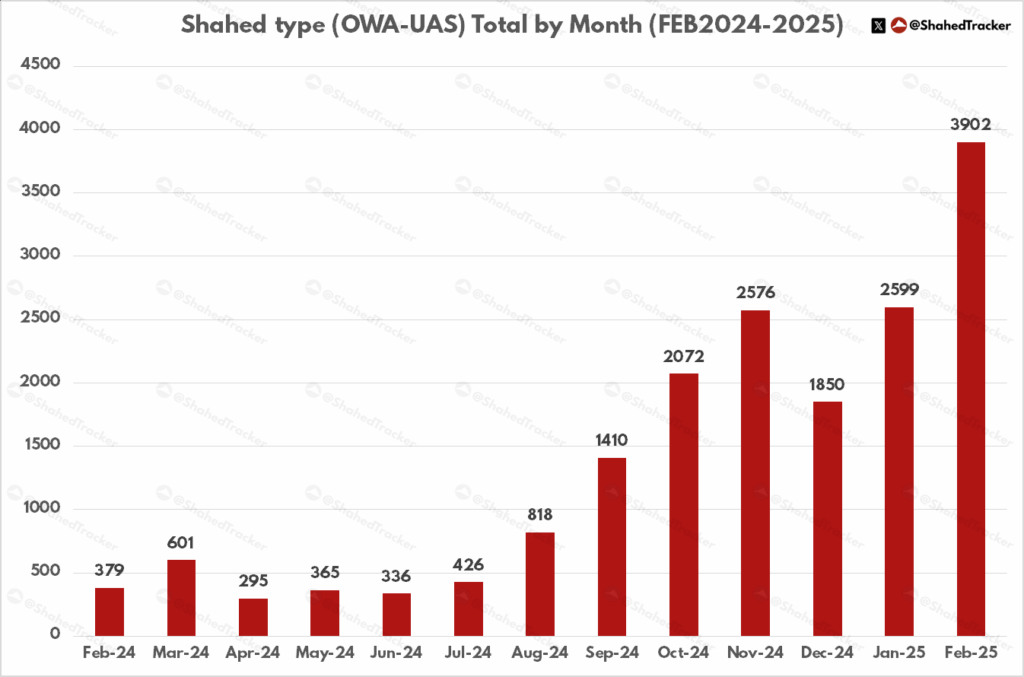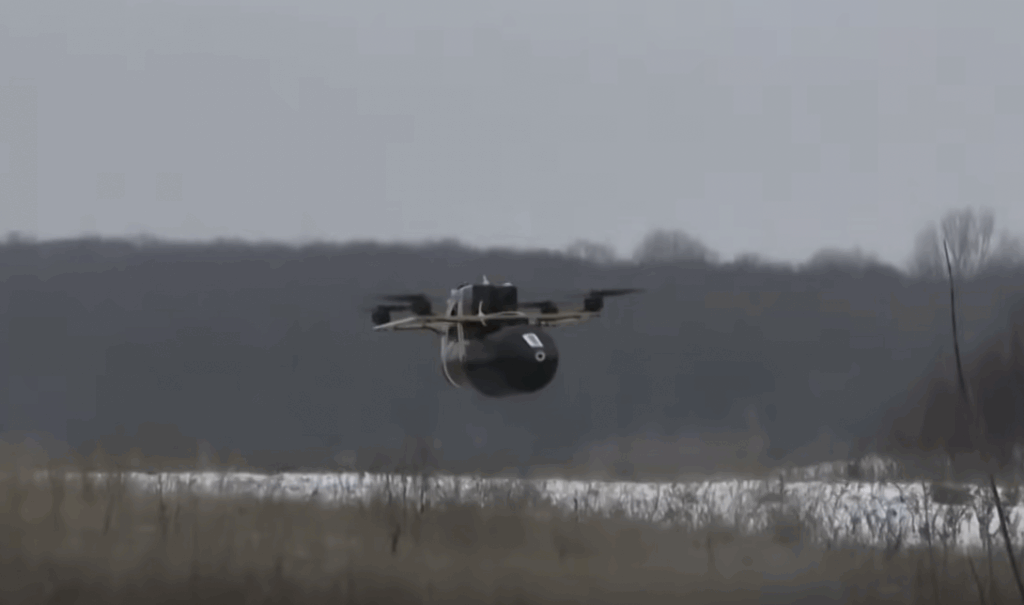In early 2024, Russia introduced a new class of drones in Ukraine that are still proving difficult to counter: fiber-optic-controlled first-person-view drones. Unlike traditional drones that rely on radio signals and can be jammed, these drones are tethered to operators via fiber-optic cables, making them immune to electronic warfare and capable of delivering precise strikes deep into enemy territory. Ukraine is now developing its own fiber-optic drones and other innovations, as is the Nordic defence industry.
The Russian fiber-optic-controlled first-person-view drones (FPV) are connected to their operators through thin fiber-optic cables, allowing real-time video transmission and control without emitting detectable radio frequencies. This makes them resistant to jamming and harder to detect. They can carry explosive payloads and are used for reconnaissance and direct attacks. The optical fibre costs upwards of €500, which can be more than the drone itself. A single missile costing around a million dollars might take out a dozen people. But with that same million, you could buy 10,000 drones, arm each with four grenades, and potentially eliminate 1,000 to 2,000 troops—or take out up to 200 tanks.

Russia began deploying these drones in early 2024, particularly in regions like Kursk. Their use has increased, with reports indicating they have been effective in bypassing Ukrainian electronic defences and striking high-value targets. The drones’ ability to operate in heavily jammed environments gives Russia a tactical advantage. As both sides continue to innovate, the battlefield is becoming increasingly complex, with technology playing a crucial role in determining outcomes.
Aiming for Extended Operational Ranges
As Russia intensifies its use of fiber-optic-controlled drones—impervious to traditional electronic jamming—Ukraine has been compelled to develop innovative countermeasures and seek enhanced support from Western allies.
Ukraine is working to develop its own fiber-optic drones. Companies like 3DTech in Kyiv are producing these drones to match Russia’s capabilities. Ukrainian forces are also exploring countermeasures, such as using infrared and acoustic detection to identify and neutralize these drones.
Ukraine is intensifying its efforts to develop fiber-optic-controlled drones with extended range, aiming for 20 kilometers or more, compared to earlier models limited to just 5 to 10 kilometers. The country is also experimenting with fiber-optic-controlled ground robotic systems (GRS). A key breakthrough in this area has been the significant reduction in production costs for these advanced drones.
Ukraine has initiated several key strategies:
- Development of Indigenous Fiber-Optic Drones: Ukraine is advancing its own fiber-optic drone technology, aiming for extended operational ranges up to 20 kilometers. This initiative seeks to match and counteract Russian capabilities in the field.
- Physical Countermeasures: Ukrainian forces have employed infrared and acoustic detection systems to identify the presence of fiber-optic drones. Once detected, these drones are targeted and destroyed using direct-fire weapons, such as shotguns and sniper rifles.
- Targeting Drone Operators: By tracing the fiber-optic cables back to their source, Ukrainian units have successfully located and neutralized Russian drone operators, disrupting the deployment of these drones.
Western Support
In response to Ukraine’s needs, Western countries have provided substantial assistance:
- Drone Supply and Technology Transfer: The United Kingdom and Norway have jointly committed €545 million to supply Ukraine with advanced drones, enhancing its aerial capabilities.
- Training and Tactical Support: Western military advisors are collaborating with Ukrainian forces to develop effective tactics against fiber-optic drones, including the use of drone interceptors and other physical countermeasures.
- Intelligence Sharing: Enhanced intelligence cooperation has enabled Ukraine to better anticipate and counteract drone threats, improving battlefield awareness and response times.
Through these combined efforts, Ukraine continues to adapt to the evolving challenges posed by advanced drone warfare.
Nordic Innovations: Drone Swarming and Interception
The Nordic defence industry is experiencing significant advancements in unmanned aerial systems (UAS), with a focus on enhancing capabilities to counter emerging threats such as fiber-optic-controlled drones.
Patria, Finland’s leading defence company, has expanded its unmanned systems portfolio through the acquisition of Nordic Drones Oy, a Finnish drone manufacturer. Patria has introduced the Patria ONE, a modular FPV drone that offers both radio and fiber-optic guidance options, enhancing its resilience against electronic warfare tactics. The modular design enables quick swapping of components, including radios, payloads, and motor arms. Additionally, Patria’s lineup includes the Patria SKY, a long-range multipurpose quadcopter, and the Patria GEO, designed for terrain mapping.

Sweden is making significant strides in drone technology through initiatives led by Saab and Nordic Air Defence. Saab has developed a drone-swarming program that enables the control of up to 100 uncrewed aircraft systems simultaneously. This technology is set to be tested during the Arctic Strike Exercise, demonstrating its potential for reconnaissance, defence, and payload delivery in complex environments.
Nordic Air Defence has unveiled the Kreuger 100, a compact anti-drone missile, high-speed drone interceptor designed to counter low-cost aerial threats. This system offers a cost-effective solution for neutralizing drones.
The Norwegian Army has incorporated various UAVs, including the PD-100 Black Hornet Nano and the AeroVironment RQ-20 Puma, to enhance reconnaissance capabilities. Additionally, Norway is deploying the NOMADS (National Manoeuvre Air Defence System), a mobile ground-based air-defence system designed to counter aerial threats, including drones.
Read More:
- United24: Ukraine Focuses on Fiber-Optic Drones for Long-Range Strikes, Closing Tech Gap With Russia
- United24: Ukraine Focuses on Fiber-Optic Drones for Long-Range Strikes, Closing Tech Gap With Russia
- NextGen Defense: The Defense Post: Defense Disruptors: How Nordic Air Defence Is Rethinking Drone Warfare
- Defense and Security Monitor: Drone Wars – Developments in Drone Swarm Technology
- Wikipedia: Patria (company)
- Defence Blog: Finnish Patria expands unmanned systems portfolio
- Radio Free Europe: Fiber-Optic Drones The New Must-Have In Ukraine War
- Combating Terrorism Center: On the Horizon: The Ukraine War and the Evolving Threat of Drone Terrorism
- Euronews: Ukraine’s drone tech crucial to frontline superiority, digital transformation minister says
- Euronews: This Ukrainian drone is safe from electronic warfare thanks to fibre-optic cables
- Youtube: Ukraine’s Innovation Against Fiber-Optic Drones – Ukraine SITREP
- Youtube – Radio Free Europe: Why Fiber Optic Drones Are Changing Combat Operations | Russia Uk
- IEEE Spectrum: How Ukraine’s Drones are Beating Russian Jamming
- BulgarianMilitary.com: UK, Norway send massive drone surge to Ukraine in $585M aid push
- The Guardian: ‘They cannot be jammed’: fibre optic drones pose new threat in Ukraine
- Forbes: Defiant Ukrainian Drone Operators Followed Fiber Optic Cables To Track A Russian Drone Team Back To Its Base
- UAS Vision: Finland’s Patria Introduces New Drone Range
- C UAS HUB: Swedish firm Nordic Air Defence unveils Kreuger 100 anti-drone missile
- Wikipedia: PMMC G5
- Wikipedia: List of equipment of the Norwegian Army



